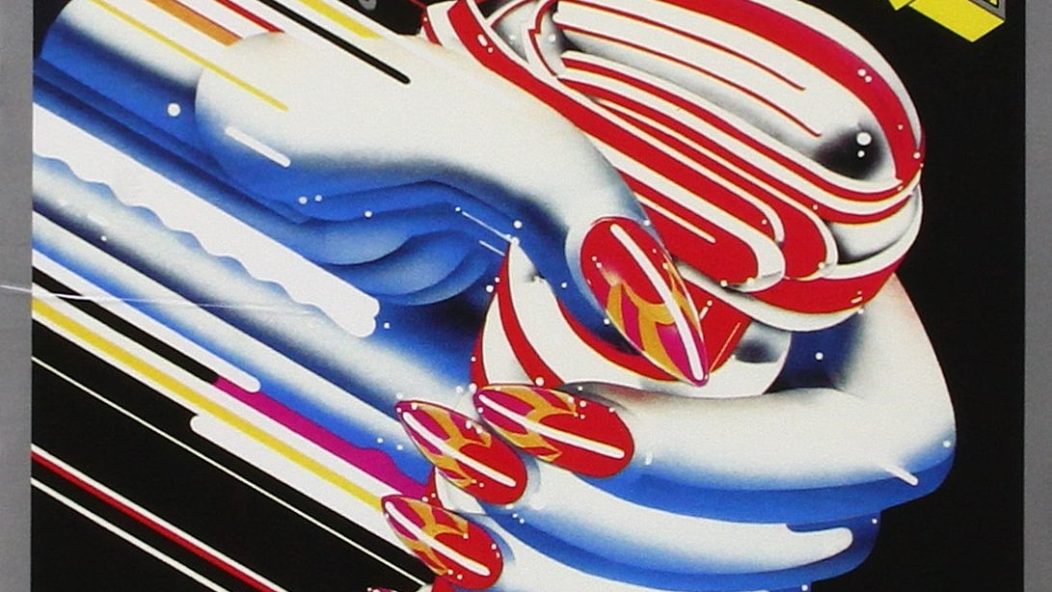
Judas Priest's 'Turbo' Turns 30

…
Time heals all wounds, but the ill will surrounding some records never dies, even those made by classic metal bands. Case in point: Turbo, the tenth album by Judas Priest, which turns 30 today.
I have never had a harder time finding a writer to review a classic record than I had for Turbo. In fact, when I first floated the idea of writing about it to the Invisible Oranges staff no less than three writers, including resident Judas Priest superfan Richard Street-Jammer, informed me not only that they would not be reviewing Turbo but that it’s a bad record which does not deserve a second look. When he found out I was going to write a piece anyway, he said:
“I think the most dignity you could give to Turbo is to make the piece nothing but horrid innuendo.”
After revisiting it, I am of two minds about Turbo. It does not deserve the spite that even dedicated Priest fans continue to heap upon it, but at the same time it’s the first obvious misstep in Priest’s career. The thing that people hate about it is probably the best part of the album.
Guitar synthesizers make up the most historic part of the Turbo story. At the time, even though there was still a strong anti-synth prejudice in rock music, the guitar synthesizer was becoming more cheap and accessible thanks to the innovation of standardized MIDI technology in 1983 and subsequent mass produced guitar-synth units by Roland.
Embracing the new tech probably sounded like an appealing idea given the landscape of rock music at the time. The synthesized guitar sound had made in-roads to both pop and progressive rock. Sixties prog giants King Crimson and Yes had both returned in 1981 and ’82 respectively with synth-heavy records—that Yes album, 90125, was their biggest hit ever thanks to “Owner of a Lonely Heart.” More importantly, Van Halen’s 1984, their heel-turn synthesizer acceptance record, hit #2 on the Billboard top 200 only five days after Defenders of the Faith was released. It was a radical move by Van Halen, and a game-changer.
Defenders performed admirably, but did not chart quite as well as Screaming for Vengeance. It achieved #19 and #18 on the UK and US charts respectively, as opposed to its predecessor’s #11 and #17. It’s easy to imagine Priest meeting on their tour bus while hearing “Jump” for the hundredth time and thinking “Shit, we could have done this. We should have done this. Next time we will.” And they did try.
Released in 1986, Turbo seems like an overt attempt to give Judas Priest another massive multi-hit record. Virtually every song features a backing vocal track during the chorus by Racer X drummer Jeff Martin. Songs like “Rock You All Around the World” and “Wild Nights, Hot & Crazy Days” seem to split the difference between Van Halen and REO Speedwagon, only without the instrumental virtuosity of the former or the milquetoast comfort of the latter. The otherwise dull-as-dirt “Parental Guidance” manages to ape Grace Under Pressure-era Rush during its bridge. The hard edges that Priest sharpened for Defenders are mostly blunted here.
Here’s the rub: the very best songs on Turbo make full use of the guitar synth. While Iron Maiden made the better synth-acceptance record that same year with Somewhere in Time, Priest wrote two stone-cold synth-metal classics.
“Out in the Cold” opens side two of Turbo, and it neatly applies the gothic overtones of “Last Rose of Summer” as well as the moody delivery of “Sentinel” and “Love Bites” to the prog-pop template that was making Rush, Yes and Asia beaucoup bucks. Priest rightly played it first on the Turbo-supporting Fuel For Life tour (yes, this is the Heavy Metal Parking Lot tour). The shadow of this song looms long over the finale of Whitesnake’s “Still of the Night,” which would be a massive hit the following year.
Opener “Turbo Lover” is even better. The only Turbo song to remain a live concert staple, it remains probably the best use of synthesizer and drum machine by a NWOBHM band, and presages the industrial metal micro-genre. Even though “Out in the Cold” is good, it’s a Priest take on an established idea; “Turbo Lover” is its own beast. There is a surplus of hard rock songs about good sex, but few actually sound like A+ fucking. “Turbo Lover” is the latter. It helps that Halford’s homoerotic innuendo game is at its very strongest on this song and almost poetically, Dave Holland’s drum beat is so uncomfortably steady that he sounds as if he recorded it while experimenting with his first butt plug.
In retrospect it’s surprising that “Turbo Lover” wasn’t more of a hit. Perhaps unintentionally, it’s chilly, detached and steady delivery resembles the growing new wave movement and re-discovery of dance music at the time. Someone at Columbia records noticed: they hired house DJ Freddy Bastone to remix it as a dance track. It’s essentially the entire Rammstein template eight years before that band formed. I adore the extended 7-minute cut of his remix (Bastone’s crossfade game was on point), which can be seen as a window into an alternate history: what if the NWOBHM and New Wave had joined forces as commercial juggernaut instead of the LA glam sound? Maybe I would have finally gotten the Depeche Mode/Metallica collaboration album I’ve always dreamed about.
…
…
Of course, that didn’t happen. Turbo performed more poorly than Defenders of the Faith, making it Priest’s third and final Platinum album. They returned to their hard rock roots on Ram it Down two years later with disastrous results—it’s neck-and-neck with Nostradamus for Priest’s worst album with Halford.
The swansong of Priest’s commercial heydey, Turbo is uneven at best, but its highlights are among Priest’s most successful experiments.
…
…










